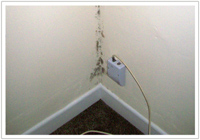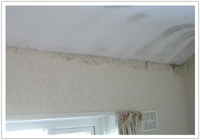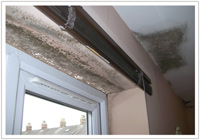
Dampness, condensation, and mould problems
Damp and condensation is a problem in many homes today - even in houses with modern efficient central heating systems. When your home's air quality is poor, condensation can form on walls and windows which in turn allows mould to grow. For people suffering from asthma or respiratory problems, poor air quality is likely to aggravate symptoms.
Understanding the reasons for dampness, condensation and mould are essential if the problem is to be solved and an effective remedy put in place. The good news is that it can be solved.



We all get used to the characteristic smells of our own homes, but it's not until we return from an extended period away - like a holiday - that we get a sense of how it feels to a visitor.
We can also become used to the stale air and humidity levels in our own homes, even when it's far in excess of what would be considered a healthy environment. We all want to make our homes more energy efficient but by taking action to reduce draughts we are also reducing the amount of fresh air coming in.



Whether through well intentioned 'improvements' or other changes some of the most common problems with old houses that reduce air circulation are:
- Installation of plastic (UPVC) windows with no trickle vents.
- Fireplaces blocked up with no ventilation.
- Draught excluders around doors.
- Lack of ventilation to cellars.
- No extractor fans to kitchen and bathrooms.
- Ventilation bricks blocked up.
Damp walls - rising damp or condensation ?
Many older homes have dampness and mould forming at the bottom of walls. In many cases these have had a remedial damp proof treatment designed to prevent rising damp, which has made little or no difference. Often this work includes disruptive and expensive removal and renewal of plaster coatings when the real problem has been excess humidity and condensation on cold walls in the effected room.
Request a free survey & report
Too much humidity and not enough ventilation
= damp, condensation & mould

